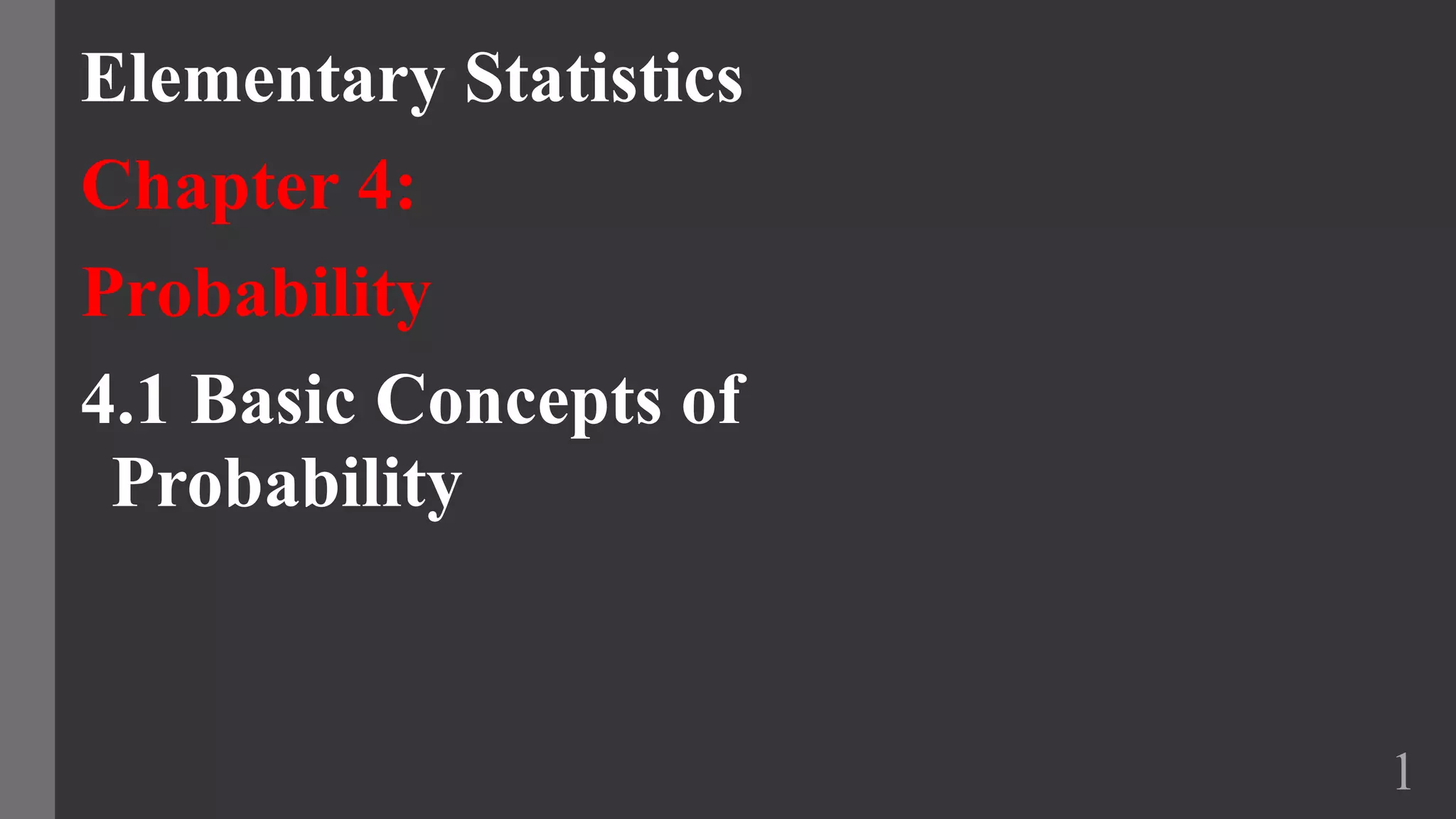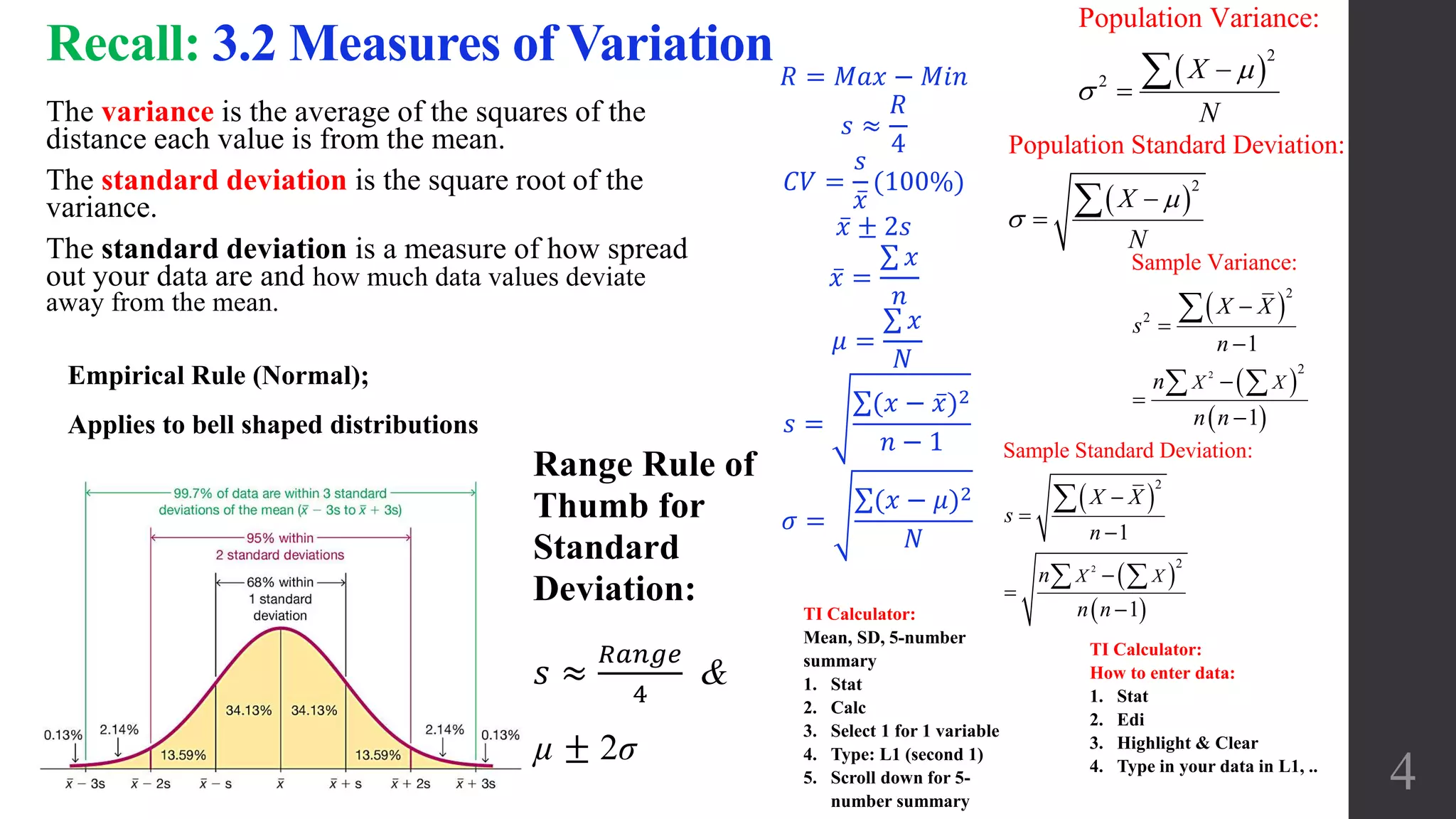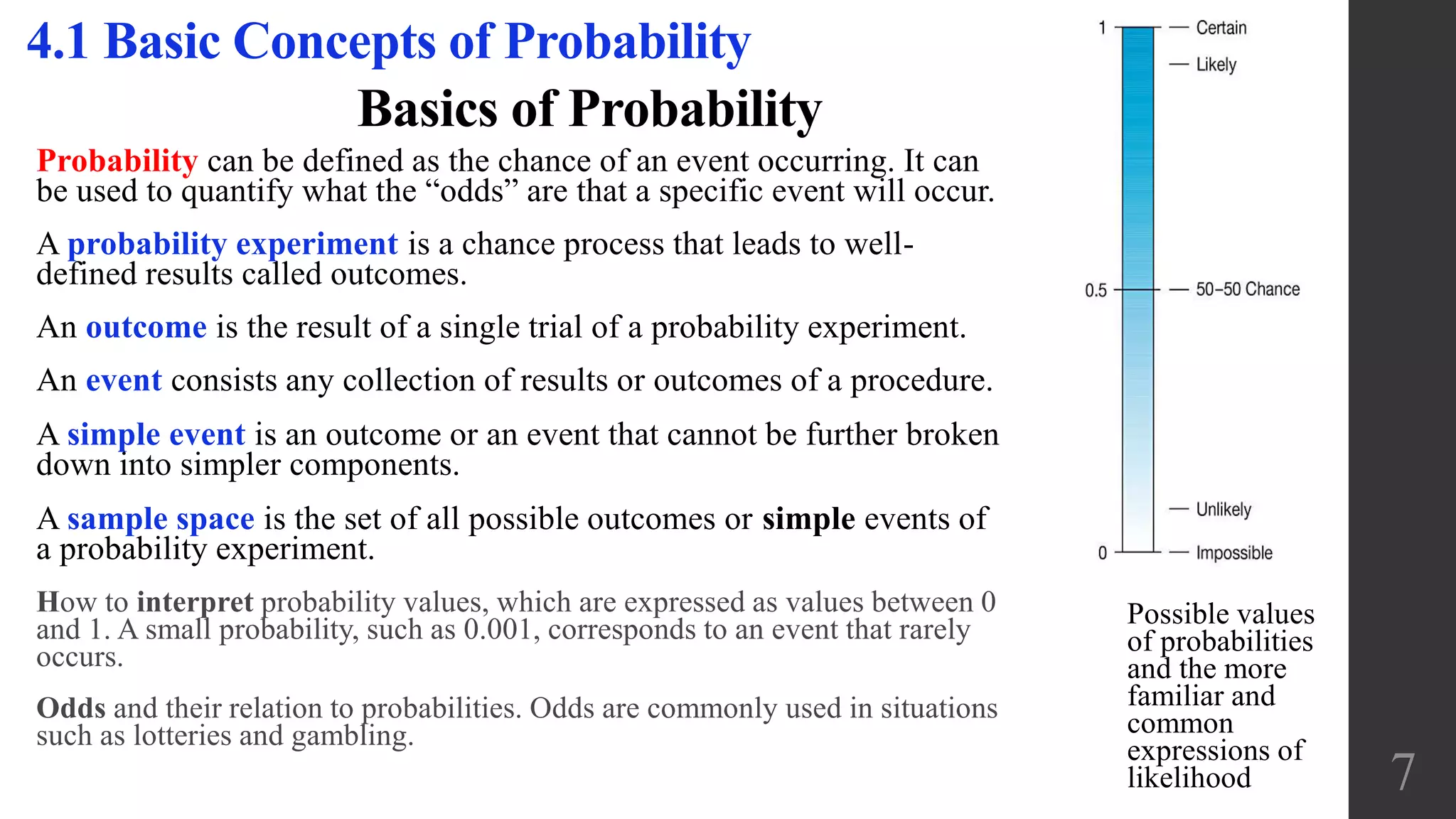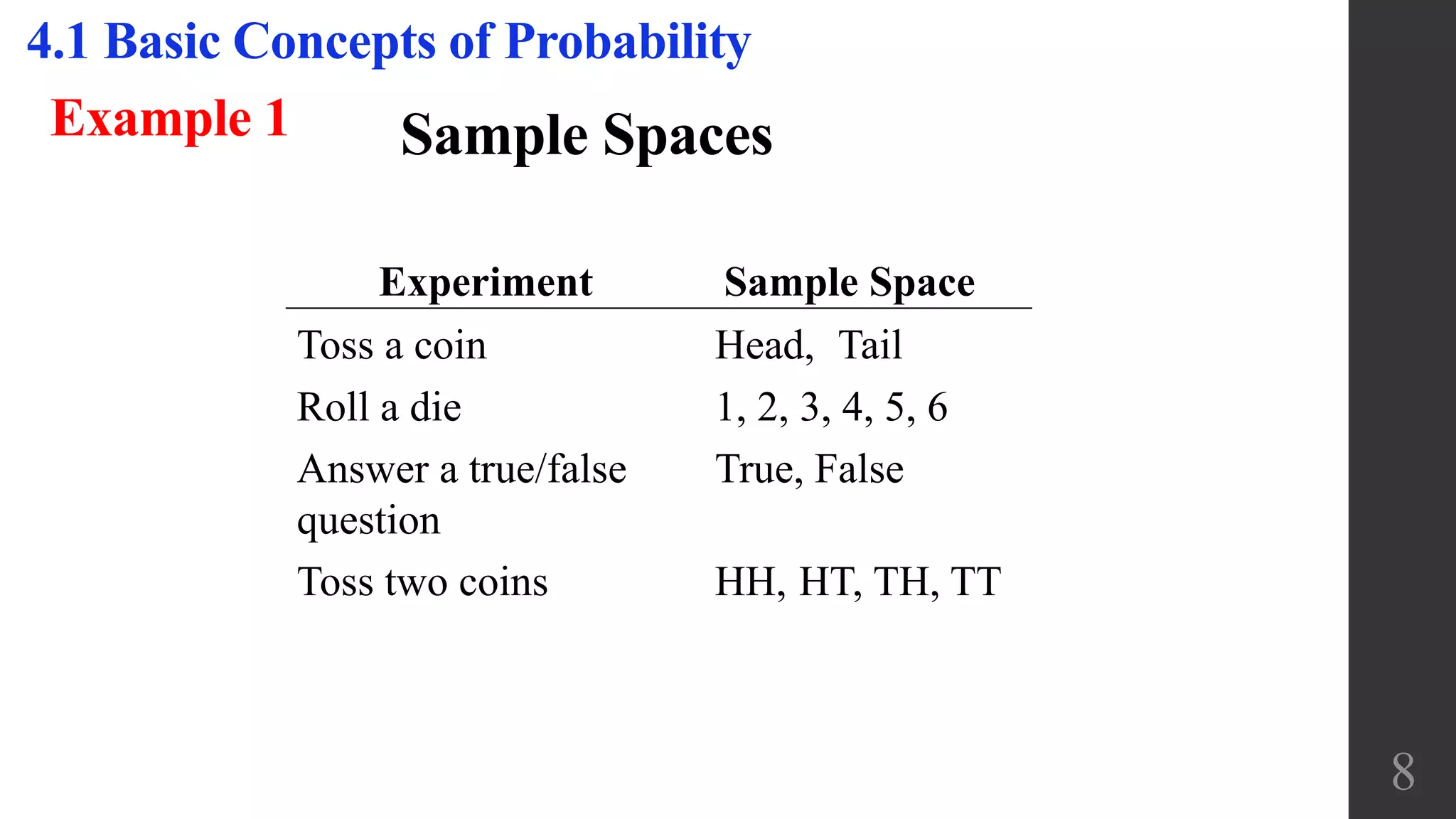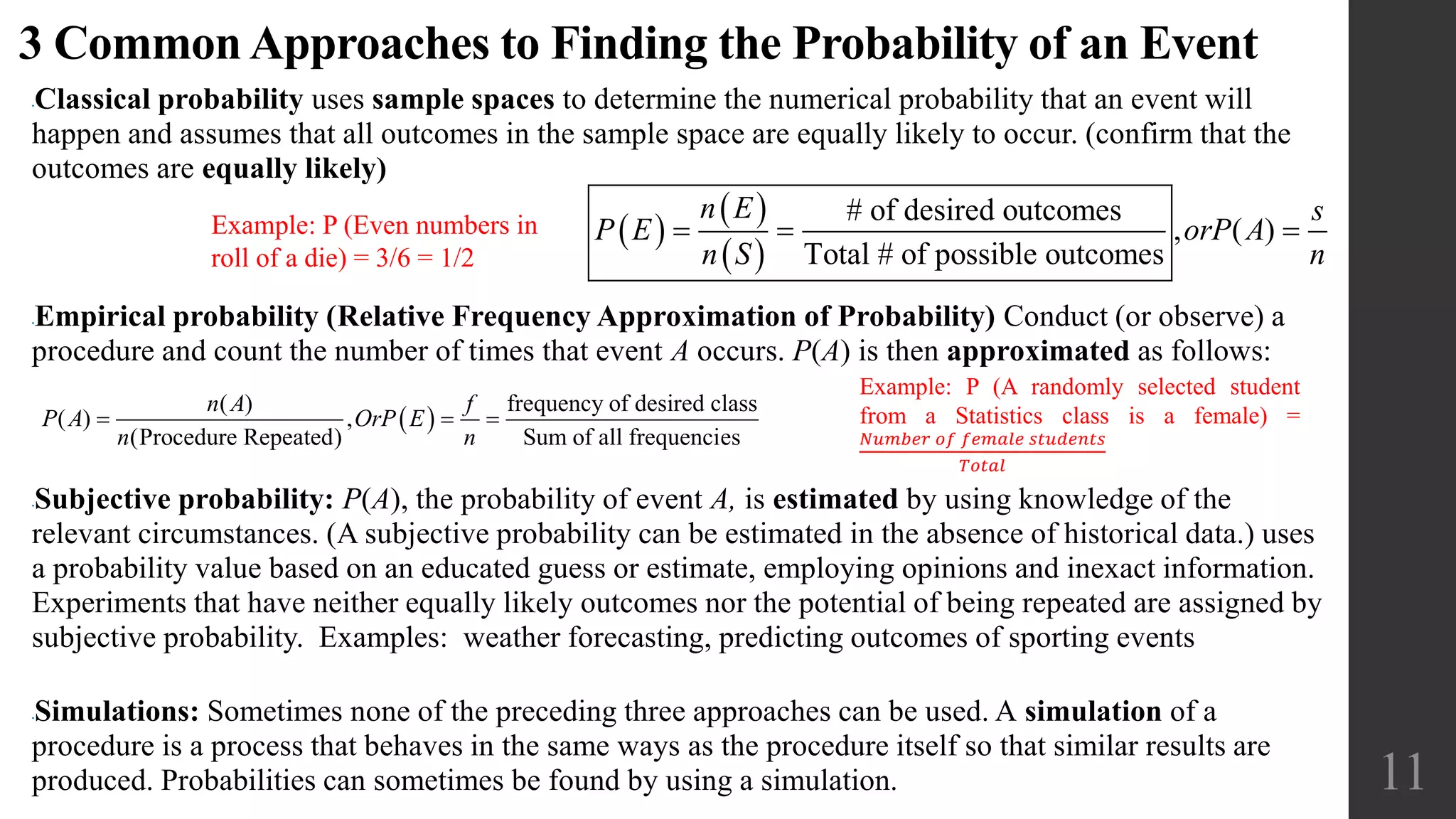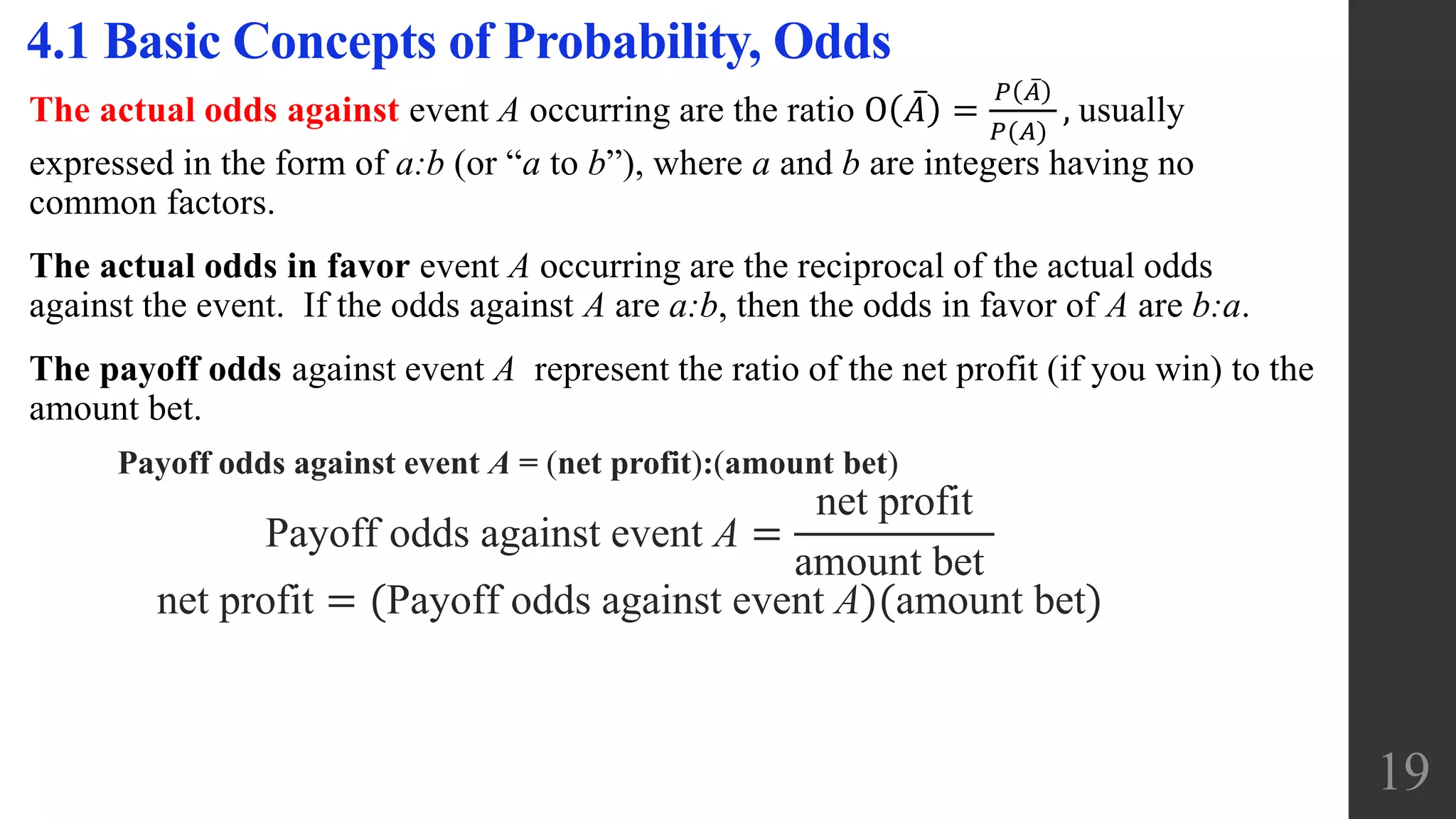1) The document introduces basic concepts of probability such as sample spaces, events, outcomes, and how to calculate classical and empirical probabilities.
2) It discusses approaches to determining probability including classical, empirical, and subjective probabilities. Simulations can also be used to estimate probabilities.
3) Examples are provided to illustrate calculating probabilities using classical and empirical approaches for single and compound events with different sample spaces.
